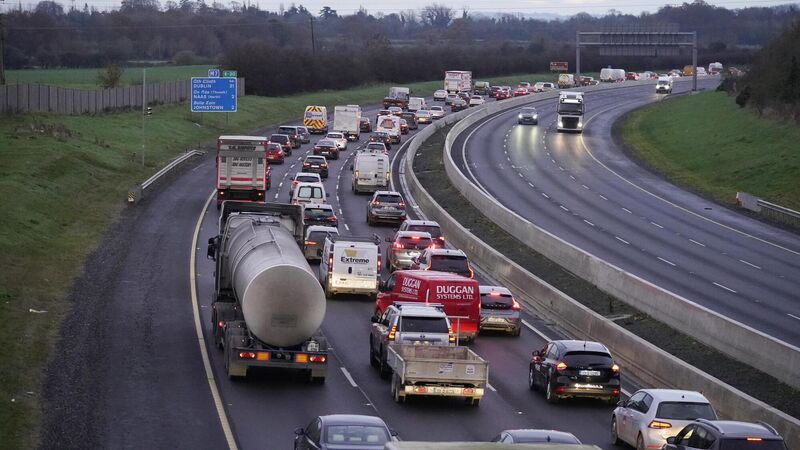Speed limits to be cut significantly to address spike in road fatalities

Congestion on the M7 near Naas. Plans are in progress to reduce speed limits on roads around Ireland
Speed limits across national, local and arterial roads are to be cut significantly under a major overhaul aimed at addressing a spike in accidents and fatalities.
Motorists will have to reduce their speed by 20km/h on many roads across the country under the new limits, which will see the maximum speed allowed on national secondary roads drop from 100km/h to 80km/h.
The default speed limit on the country's network of local and rural roads will also be cut, going from the current 80km/h to 60km/h.
Urban roads, which include built-up areas like housing estates and town centres, will drop to 30km/h. Arterial roads and radial routes around urban settings will be set at 50km/h.
So far this year, 127 people have lost their lives on the country's roads and the Government has now promised to work with the gardaí and the Road Safety Authority (RSA) to address the concerning trend.
Justice Minister Helen McEntee has already allocated €1.2m in extra funding for GoSafe vans, while changes to the penalty points system and tougher sentences for road traffic offences are all under consideration as part of measures to reduce road deaths.
Minister of State Jack Chambers, who is due to bring the new speed limits to Cabinet shortly following a comprehensive review, said "major action" is required to address the "fragmentation and inconsistency" of speed limits on our roads all over the country.
"Ultimately this is about trying to keep all road users safe by reducing deaths and serious injuries."
There were 25 road fatalities in August alone. A third of all deaths in 2023 have been people under the age of 25 and a quarter have been pedestrians.
Mr Chambers said: “After many successful years bringing road deaths down, there has been a really alarming spiral in recent times with 127 deaths already this year.
"Every single death is a tragedy for the victims’ families, friends and communities. We have seen in the last few weeks, particularly, the devastating impact road deaths involving our young people have on the whole country.”
Mr Chambers said the cuts to default speed limits will require changes to the law and so will take "a little bit of time" to implement, however, when rolled out he said the measures will reduce road fatalities.
“Reducing speed has been fundamentally proven to dramatically reduce the risk of death or serious injury in road collisions. The evidence shows that when a pedestrian or cyclist is struck by a car at 50 km/h, they have a 50% chance of living. But strike them at 60 km/h, and that chance drops to just 10%."
As well as changes to the legislation, work will now begin on drawing up guidelines to be issued to local authorities recommending new default speed limits for different categories of roads. Local authorities will then use these recommendations to set new speed limits.
The framework does, however, allow for some appropriate, upward variations where a road is deemed to be safe and good quality on assessment by local authorities.
While the default maximum speed allowed on national secondary roads and local roads will be cut, there are no proposed changes to the speed limits on motorways and national primary roads contained in the review.
“These measures need to be part of a range of initiatives to drastically improve road safety. We will be ending the anomaly in our penalty points system and we’re expanding the GoSafe contract. I am also working with the Road Safety Authority so we effectively target the right cohort with our communications campaigns. There are a number of other action areas being progressed," Mr Chambers said.
The new limits have been proposed, following the work of the speed limit review group which was established in late 2021 and comprised representatives of the Department of Transport, local authorities, RSA, gardaí and other bodies. It looked at best practice internationally and carried out a modelling analysis of potential options having regard to safety, emissions and active travel needs.








